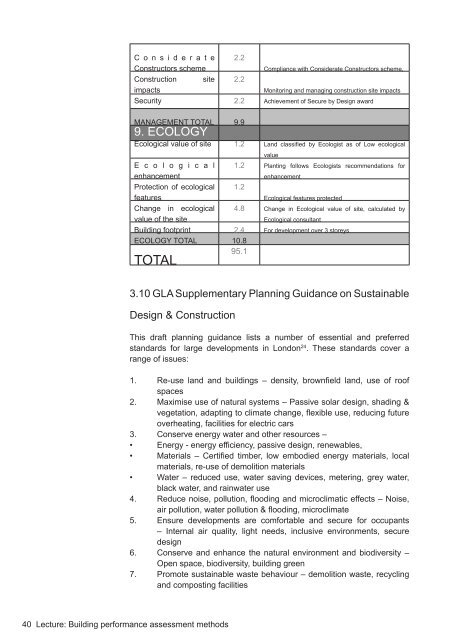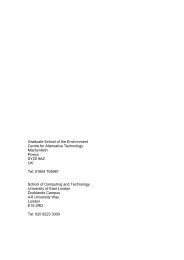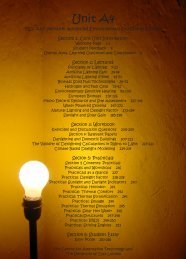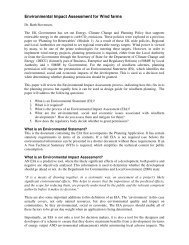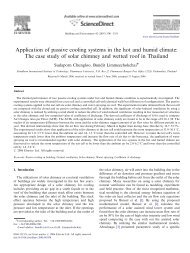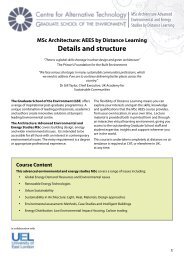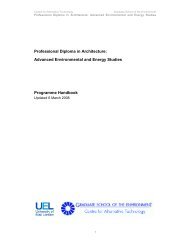Module B1 Study Book - the Graduate School of the Environment
Module B1 Study Book - the Graduate School of the Environment
Module B1 Study Book - the Graduate School of the Environment
You also want an ePaper? Increase the reach of your titles
YUMPU automatically turns print PDFs into web optimized ePapers that Google loves.
C o n s i d e r a t e 2.2<br />
Constructors scheme<br />
Compliance with Considerate Constructors scheme,<br />
Construction site 2.2<br />
impacts<br />
Monitoring and managing construction site impacts<br />
Security 2.2 Achievement <strong>of</strong> Secure by Design award<br />
MANAGEMENT TOTAL 9.9<br />
9. ECOLOGY<br />
Ecological value <strong>of</strong> site 1.2 Land classified by Ecologist as <strong>of</strong> Low ecological<br />
value<br />
E c o l o g i c a l<br />
enhancement<br />
1.2 Planting follows Ecologists recommendations for<br />
enhancement<br />
Protection <strong>of</strong> ecological<br />
features<br />
1.2<br />
Ecological features protected<br />
Change in ecological<br />
value <strong>of</strong> <strong>the</strong> site<br />
4.8 Change in Ecological value <strong>of</strong> site, calculated by<br />
Ecological consultant<br />
Building footprint 2.4 For development over 3 storeys<br />
ECOLOGY TOTAL 10.8<br />
95.1<br />
TOTAL<br />
3.10 GLA Supplementary Planning Guidance on Sustainable<br />
Design & Construction<br />
This draft planning guidance lists a number <strong>of</strong> essential and preferred<br />
standards for large developments in London 24 . These standards cover a<br />
range <strong>of</strong> issues:<br />
1. Re-use land and buildings – density, brownfield land, use <strong>of</strong> ro<strong>of</strong><br />
spaces<br />
2. Maximise use <strong>of</strong> natural systems – Passive solar design, shading &<br />
vegetation, adapting to climate change, flexible use, reducing future<br />
overheating, facilities for electric cars<br />
3. Conserve energy water and o<strong>the</strong>r resources –<br />
•<br />
•<br />
•<br />
Energy - energy efficiency, passive design, renewables,<br />
Materials – Certified timber, low embodied energy materials, local<br />
materials, re-use <strong>of</strong> demolition materials<br />
Water – reduced use, water saving devices, metering, grey water,<br />
black water, and rainwater use<br />
4. Reduce noise, pollution, flooding and microclimatic effects – Noise,<br />
air pollution, water pollution & flooding, microclimate<br />
5. Ensure developments are comfortable and secure for occupants<br />
– Internal air quality, light needs, inclusive environments, secure<br />
design<br />
6. Conserve and enhance <strong>the</strong> natural environment and biodiversity –<br />
Open space, biodiversity, building green<br />
7. Promote sustainable waste behaviour – demolition waste, recycling<br />
and composting facilities<br />
40 Lecture: Building performance assessment methods


